How to fix an IP address conflict
Is your network facing IP allocation errors, or are some users in your network complaining about the loss of network connectivity? Here's the good news: No, your host or server isn't running a virus; rather, it has encountered an IP address conflict causing a network connectivity issue, and you can fix it within minutes.
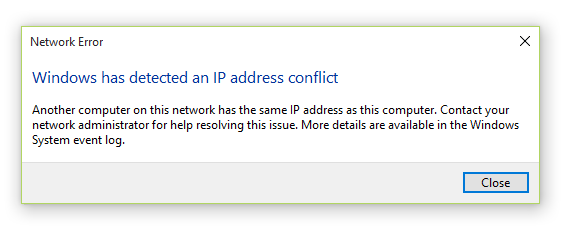
Windows abstractly describes the cause of this error in the network error message as, "Another computer on this network has the same IP addresses as this computer." This means your device is experiencing an IP conflict with another device or host in your network.
On this page, we'll discuss:
- What is an IP address conflict?
- What are the causes of an IP conflict?
- Types of IP conflicts and how to fix them
- Manual configuration steps
- How to avoid IP conflicts from occurring
- OpUtils: An effective IP address management solution
What is an IP address conflict?
IP conflict is a term used to denote the state of two or more devices within the same network or subnet that are trying to use the same IP address. This can cause communications destined for a specific host to get mixed up with other hosts, as both use the same IP. In order to avoid this situation, certain hosts lose network connectivity in the event of an IP conflict.
What are the causes of an IP conflict?
The common causes for IP address conflicts include:
- Static IP allocation
- Using different allocation strategies
- BYOD policies
- DHCP server issues
- Faulty network configurations
- Router or modem exhaustion
Static IP allocation:
Static IP allocation is when a network admin manually configures IPs to hosts or devices. This can lead to two devices being configured with the same IP address by the network admin. Using inefficient IP address management solutions like spreadsheets for IP management can lead to this issue.
Using different allocation strategies:
Employing both static and dynamic IP address allocation to configure IP addresses for network devices can lead to IP conflicts. For instance, a network admin might have assigned the IP address 192.168.1.10 to a device A (static IP allocation), and a Dynamic Host Configuration Protocol (DHCP) server operating on that network might assign the same IP address to a requesting network device (dynamic IP allocation); this can cause two different devices to have the same IP address, causing IP conflicts.
BYOD policies:
In large organizations that support bring your own device (BYOD) policies, IP conflicts can occur when outside devices entering the network have been statically assigned an IP address. For instance, a device statically configured with the IP address 192.168.1.10 in the home network, when brought inside the organizational network, continues to use the same IP address. This can cause IP conflict when a different device within the organization has been assigned the same IP address.
DHCP server issues:
Using an effective DHCP server in your network is important to secure your devices from facing IP conflicts. Substandard DHCP servers could have bugs thatcause IP conflicts by incorrect assignment of IP addresses to network devices during dynamic IP allocation.
Faulty network configurations:
Human errors and configuration slips on setting up and managing complex network infrastructures including multiple routers, adapters, and modems can cause IP conflicts.
Router or modem exhaustion:
Simple overuse of network routers and modems in home networks can cause an IP address conflict due to operational slips.
Types of IP conflicts and how to fix them
IP address conflict fixes depends on what caused the IP address conflict to occur in the first place. For example, if the cause of IP conflict between two devices is manually entered static IPs, then the conflict can be resolved by changing the IP address of one of the devices and rebooting it.
There are three common types of IP address that may occur in enterprise networks.
- IP conflicts raised by DHCP servers
- IP conflicts between DHCP server and IP allocations
- IP conflicts between IP reservation and IP allocation
IP conflicts raised by DHCP servers
DHCP servers are responsible for automatically assigning IP address configurations to devices, referred to as IP leasing, for enabling network connectivity. They maintain a log of the lease information mapping the IP address to the MAC address of the device currently accessing it. Any error or slips in these records may result in an IP address conflict in the network.
Case 1: Server lease information
When the IP address range of a subnet is managed by more than one DHCP server, it's important to ensure that the IP-MAC lease information in all the DHCP servers within the subnet are consistent. Inconsistency with the MAC address retrieved from two DHCP servers' lease information indicates an IP address conflict in the network.
Case 2: Server scope overlap
When more than one DHCP server manages the IP address range of a subnet, address scope overlap may occur between DHCP servers, resulting in IP address conflicts.
Solution:
- If the MAC address associated with the conflicting IP address is that of a network device or host, release its DHCP lease by configuring a static IP address, adjust the scopes of the DHCP servers to avoid overlapping, and then configure the device or host to use a dynamically allocated IP address to connect with the network.
- If the MAC address associated with the conflicting IP address is that of a switch port, then block the port temporarily. Adjust the scope of the DHCP servers to avoid overlap, then unblock the switch port.
IP conflicts between DHCP server and IP allocations
Reserving IP addresses allows you to keep aside a particular IP in your address space to a specific host or network device. These reserved IPs are configured with the MAC address of the device. When a DHCP server allocates this IP address to a different network device, then the reservation violation results in IP address conflicts.
Solution:
- If the MAC address associated with the conflicting IP address is that of a network device or host, release its current IP address and manually configure the device with an available IP address.
- If the MAC address associated with the conflicting IP address is connected to a switch port, then block the switch port temporarily. Release the current IP address of that MAC, manually configure the device with an available IP address, and unblock the switch port.
IP conflicts between IP reservation and IP allocation
Case 1: IP reservation and static IP allocation
When a reserved IP address is statically allocated to a different network device, then the reservation violation results in IP address conflicts.
Solution:
- If the MAC address associated with the conflicting IP address is that of a network device or host, release its current IP address and manually configure the device with an available IP address.
- If the MAC address associated with the conflicting IP address is connected to a switch port, then block the switch port temporarily. Release the current IP address of that MAC, manually configure the device with an available IP address, and unblock the switch port.
Case 2: IP reservation and DHCP server logs
Reserved IPs are usually associated with the MAC address for which they are reserved in the IP address management system. IP address conflicts occur when there is a difference in the MAC addressees from DHCP leases with reserved MAC addresses tracked by the IP address management system.
Solution:
- Check if the conflicting MAC has been assigned a static IP address. If yes, configure the MAC to obtain the IP address dynamically from the DHCP servers.
- Inspect the DHCP server logs for any discrepancies.
- If the MAC address associated with the conflicting IP address is connected to a switch port, then block the switch port temporarily. Release the current IP address of that MAC, manually configure the device with an available IP address, and unblock the switch port.
Manual configuration steps
You can manually configure the IP allocation from dynamic to static or vice versa in your network devices by following these steps.
To configure a static IP address:
Step 1: Right-click the internet access icon in the task bar, and click Open Network and Internet Settings.
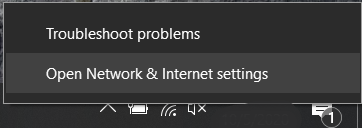
Step 2: Click the Network and Sharing Center option, which opens the Network and Sharing Center console.
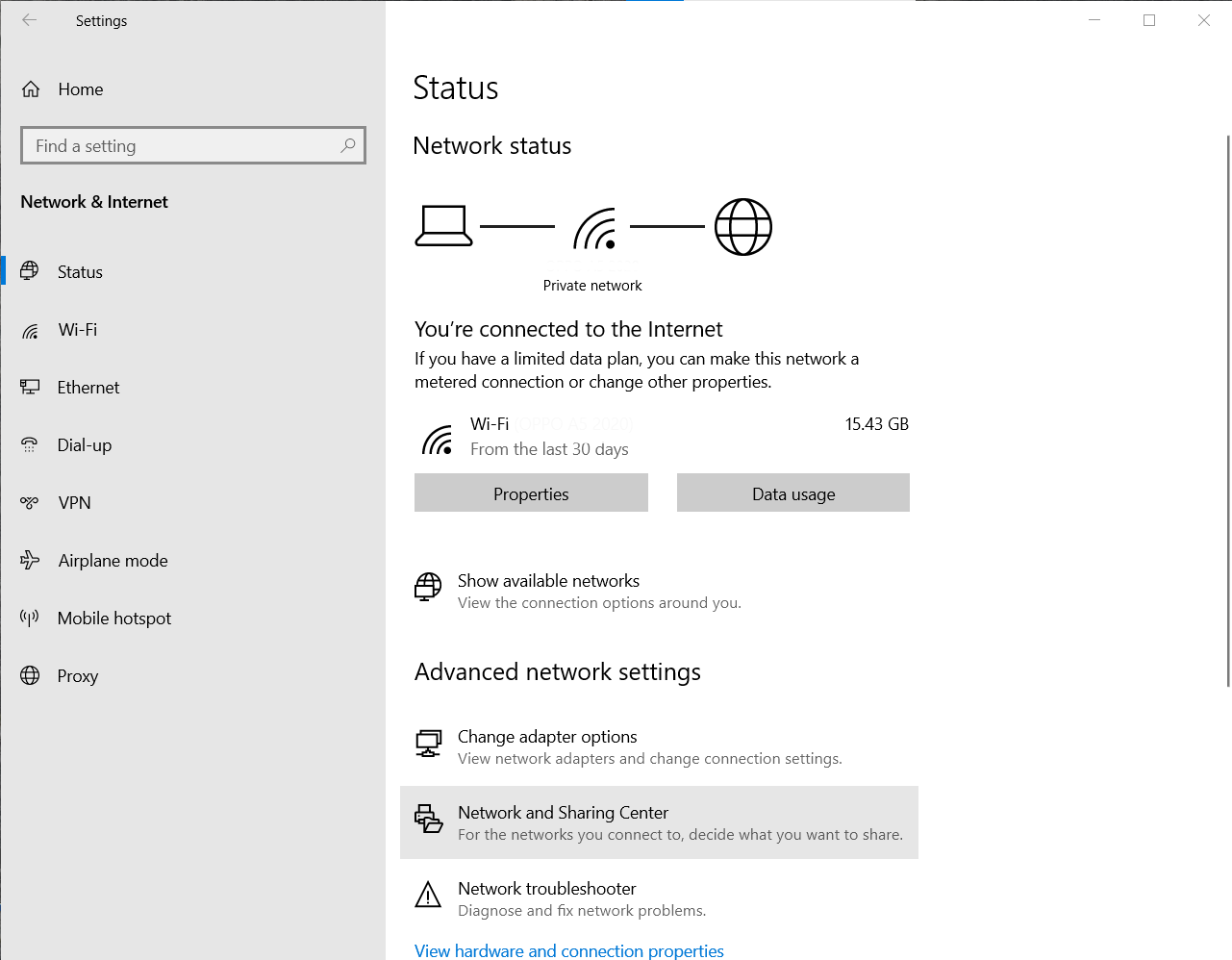
Step 3: Click the Connections field, which displays the general information about your connection.
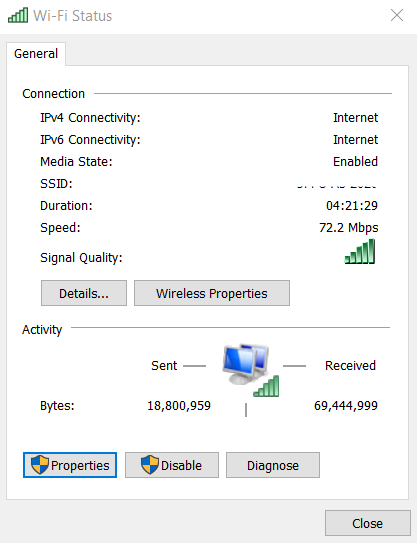
Step 4: Click Properties, then double-click the Internet Protocol Version 4 (TCP/IPv4) field.
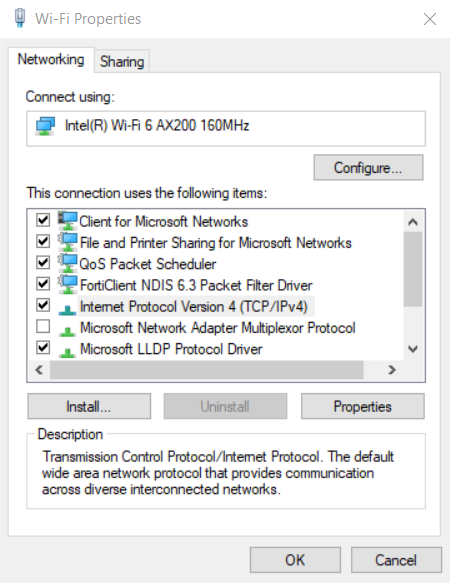
Step 5: Select Use the following IP address, and enter an IP address.
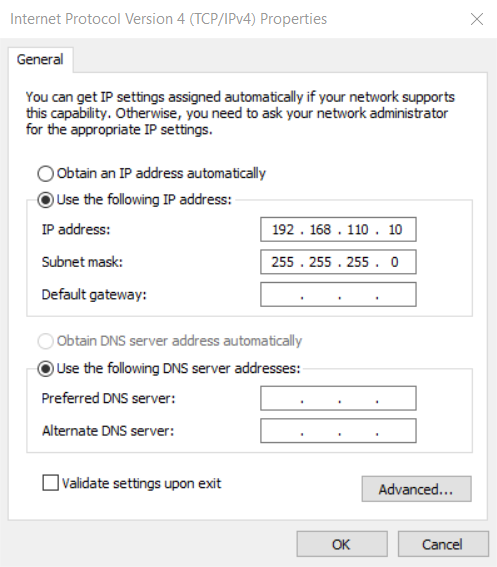
Step 6: Press Tab, and the field Subnet mask is automatically filled. Press OK and close all tabs.
Step 7: Restart your device, and try connecting to the network now. Your device will now connect to the network using the newly assigned IP address until it's changed.
To enable dynamic IP addressing for your device, follow the steps below:
Step 1: Right-click the internet access icon in the task bar, and click Open Network and Internet Settings.

Step 2: Click the Network and Sharing Center option, which opens the Network and Sharing Center console.
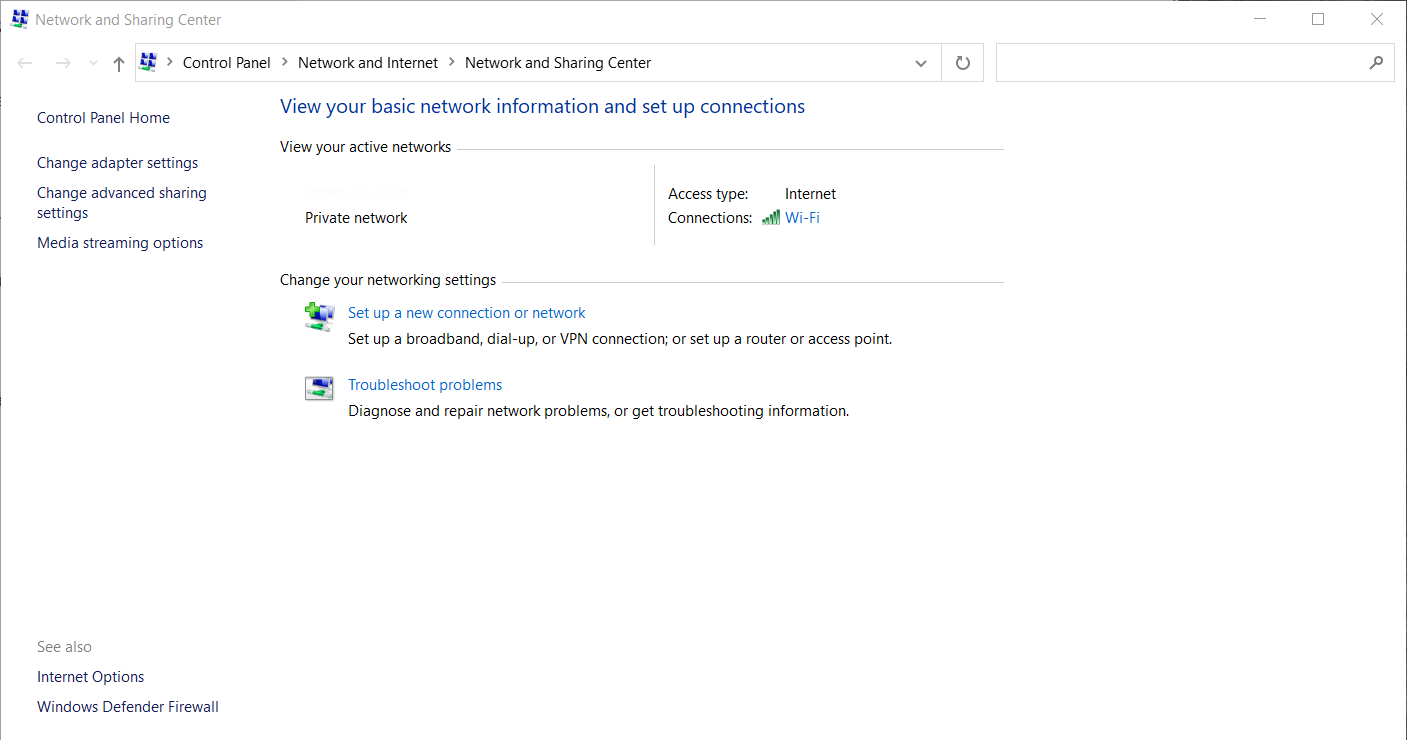
Step 3: Click the Connections field, which displays the general information about your connection.
Step 4: Click Properties, and double-click the Internet Protocol Version 4 (TCP/IPv4) field.
Step 5: Select the Obtain an IP addressautomatically and Obtain an DNS server address automatically options, and click OK.
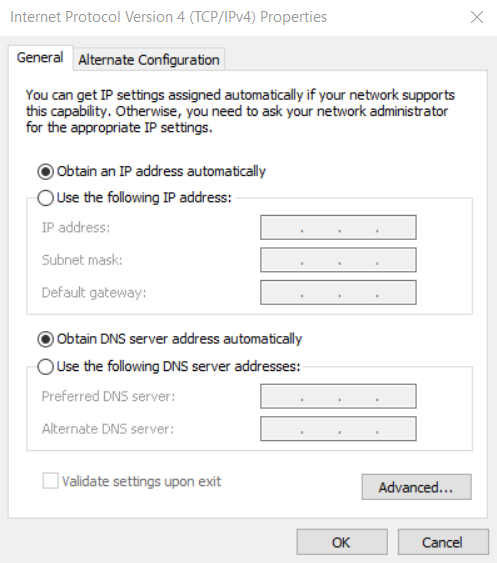
Step 6: Close all tabs and restart your device.
Try to connect to your network again.
Releasing an IP lease and renewing an IP address
Using this method, you can manually release the current IP address and request a new IP address for your network device from the router or server.
Note: To use this method, you will have to be a local user with administrative rights.
Step 1: In the Start menu, search cmd or comand prompt. This opens a command-line interface.

Step 2: Type the command ipconfig/flushdns and press Enter. This refreshes the DNS configurations of your device.
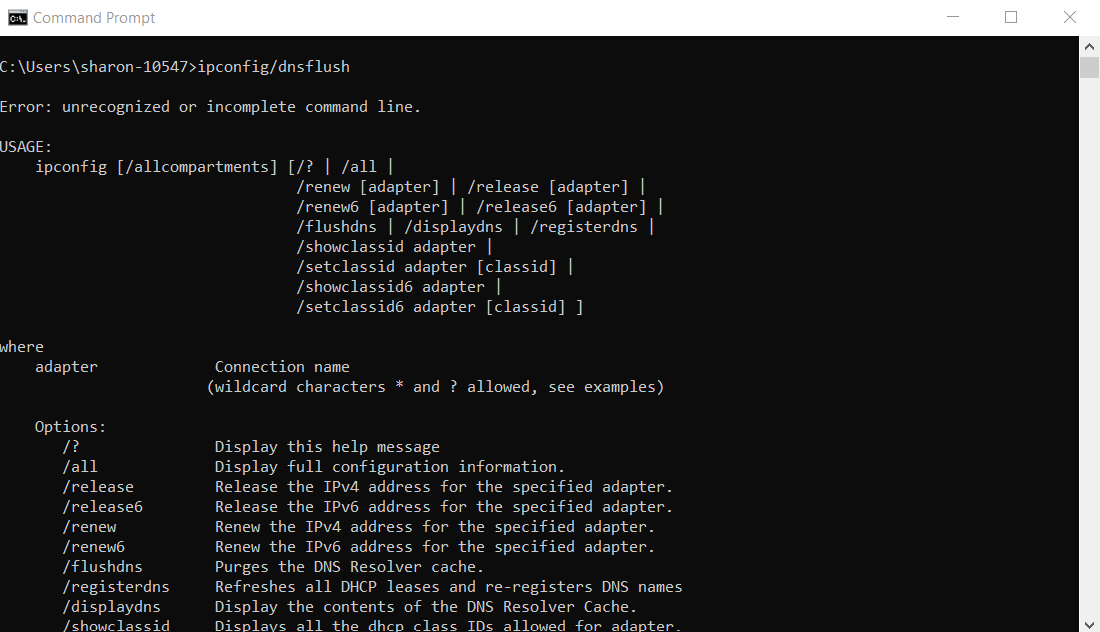
Step 3: Next, type the command ipconfig/release and press Enter. This releases the lease of your current IP address back to the DNS server/service provider.

Step 4: Now, type the command ipconfig/renew and press Enter. This requests a new IP address for your network device.
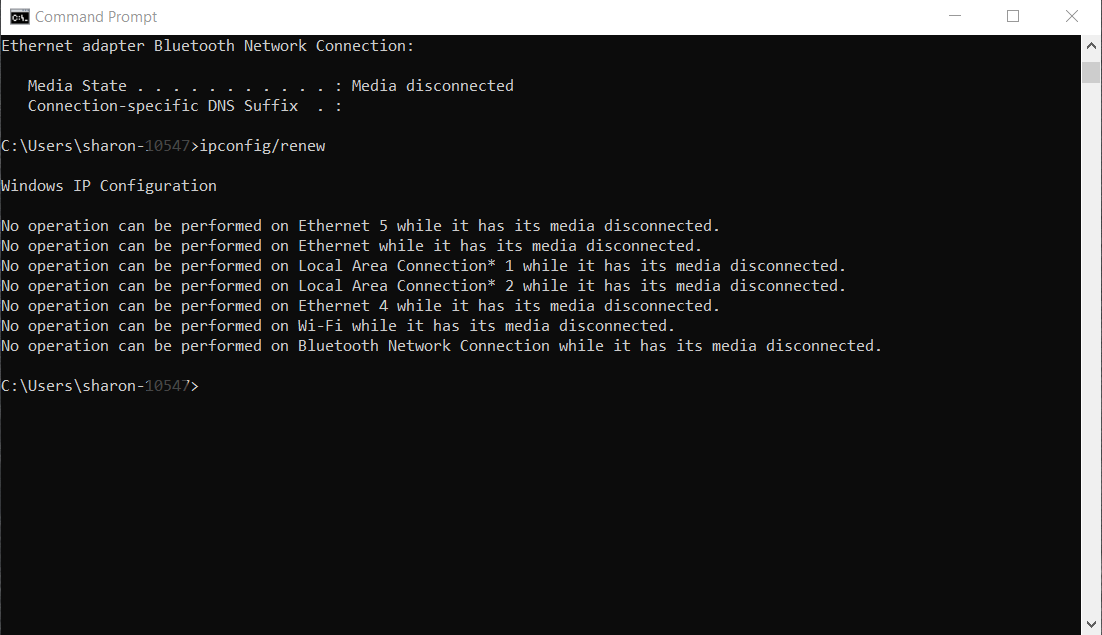
Step 5 (optional): Type the command ipconfig and press Enter to view the details of the new IP configuration dynamically allocated to your system.
Step 6: Restart your device.
By using a new IP address to connect to the network, you can fix the Windows has detected an IP address conflict network error.
How to avoid the Windows has detected an IP address conflict error
Network IP address conflicts have become a common issue with the growth of networking. They can cause costly network downtime when left unresolved, especially in large-scale or organizational-level networks.
Three common ways to circumvent IP conflicts include:
- Continually monitoring and scrutinizing IP address allocations to avoid duplication.
- Ensuring proper functioning of network components like routers and modems.
- Checking for bugs in DHCP servers that might result in IP conflicts.
Running an IP conflict-free network isn't possible with homegrown IP management solutions or spreadsheets since they don't aid in IP address conflict detection. It requires a specialized solution like OpUtils to manage and troubleshoot your IP address space, resolving IP address conflicts, and ensuring a sound network infrastructure.
OpUtils: An IP address management solution
ManageEngine OpUtils is an IP address and switch port management solution that provides advanced IP address monitoring and switch port mapping functionalities. With features like real-time IP address scanning, tracking, and continuous monitoring, OpUtils enables network admins to proactively monitor and avoid network issues such as IP conflicts. Equipped with 30 + network tools, OpUtis aids in efficiently troubleshooting diverse networking issues including IP address conflict.
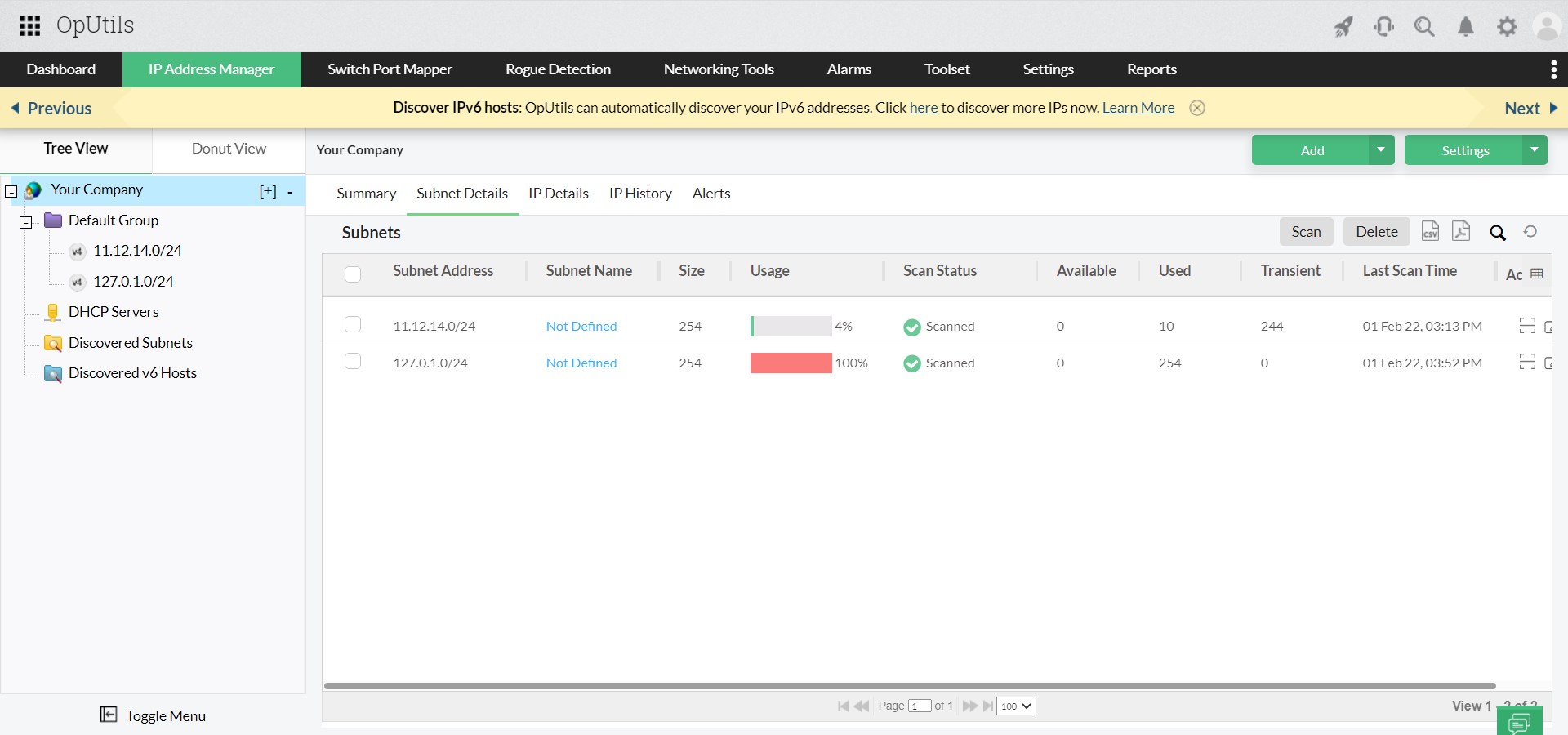
New to OpUtils? Download a 30-day free trial, or schedule a live demo with our product expert to see how OpUtils can work for your network.